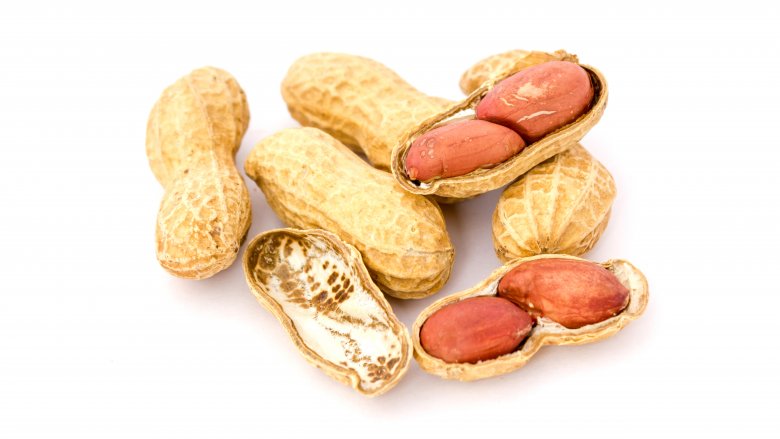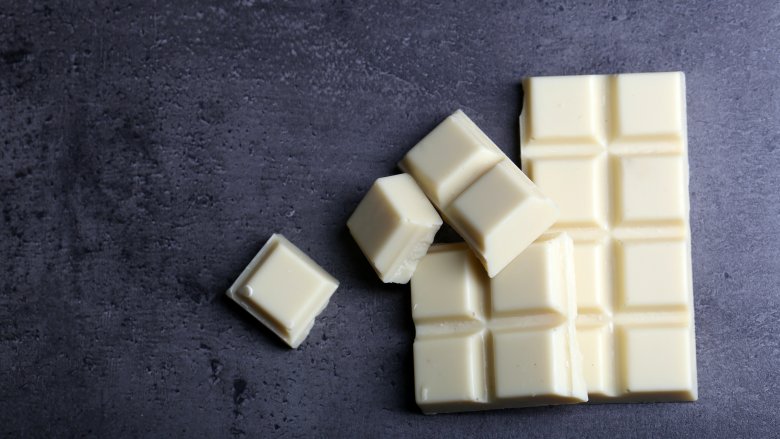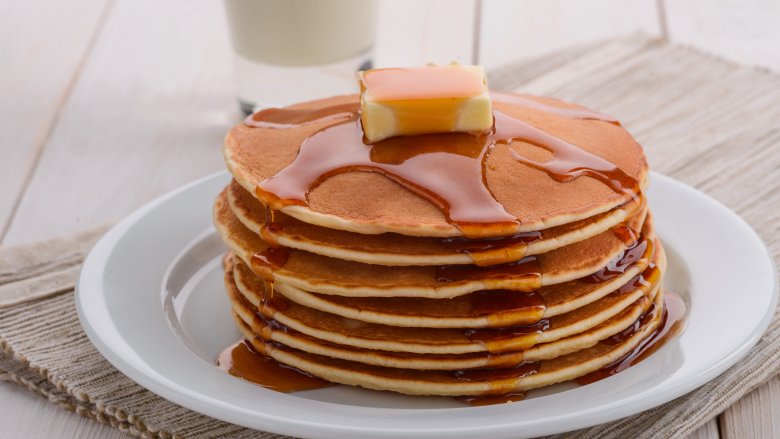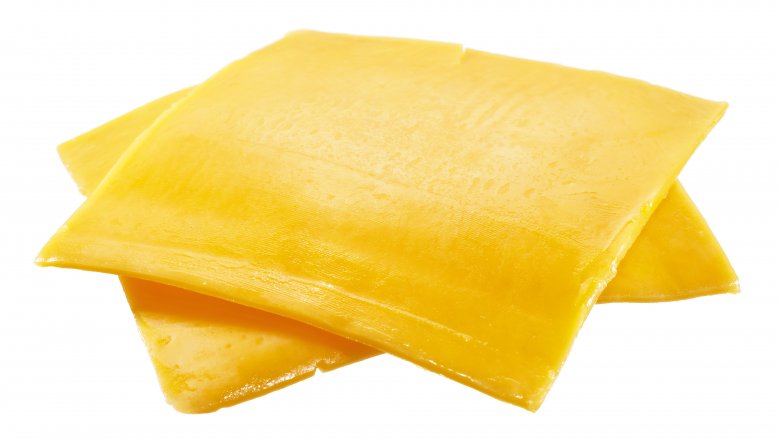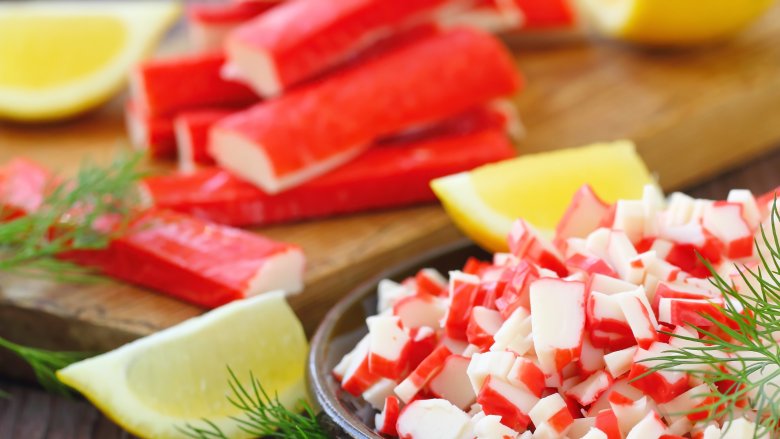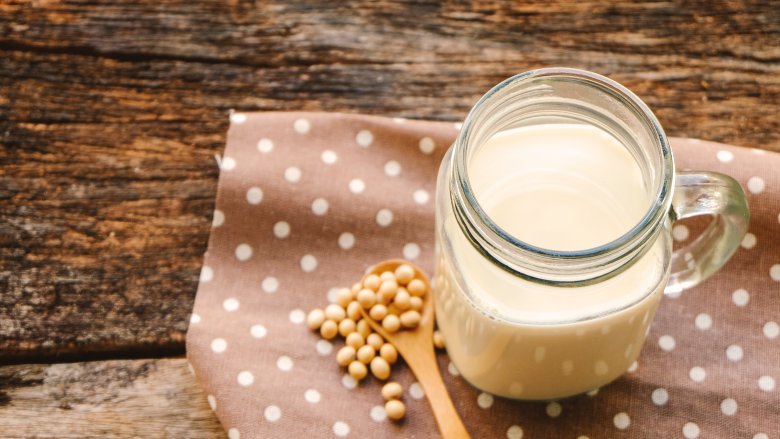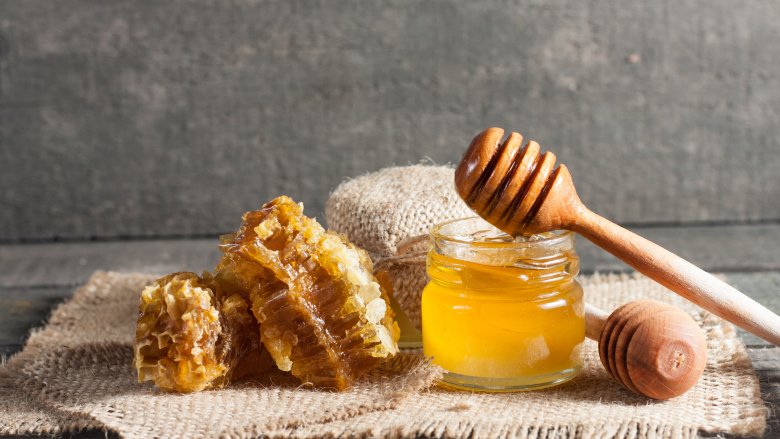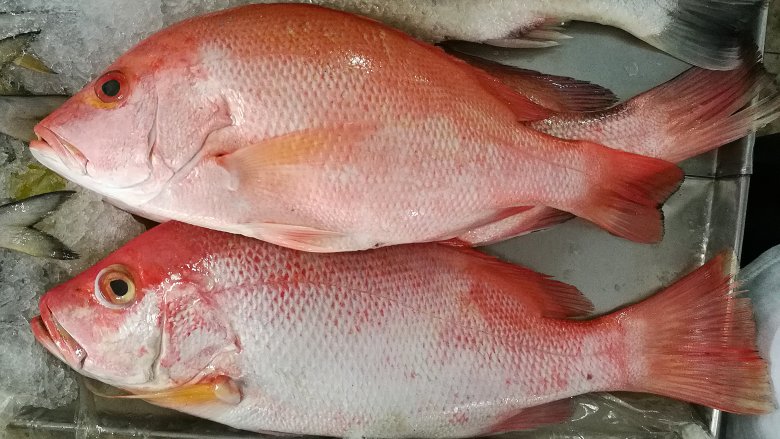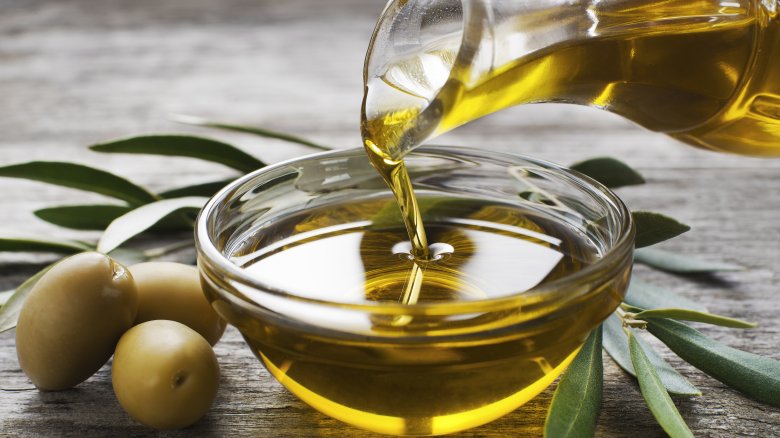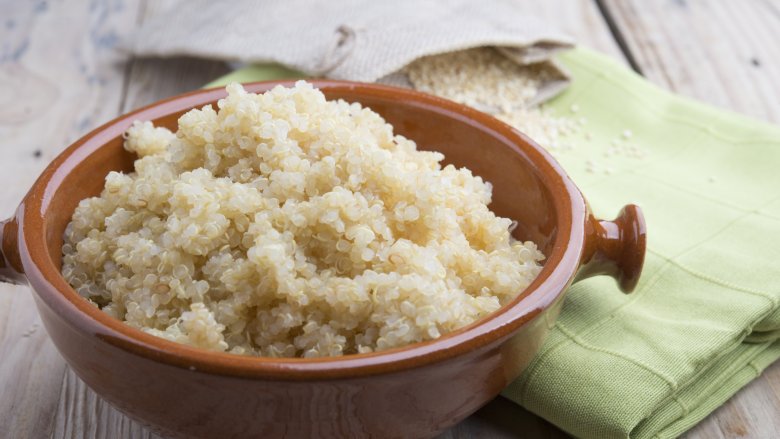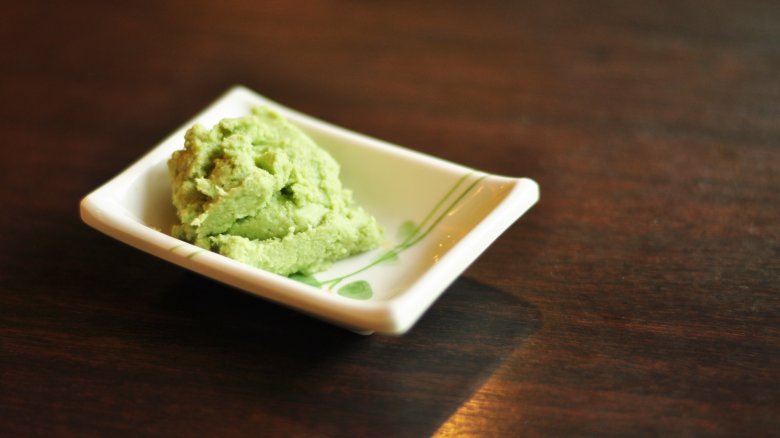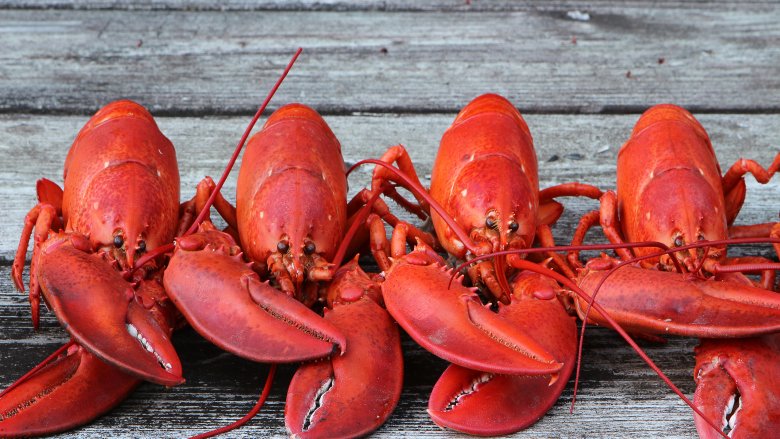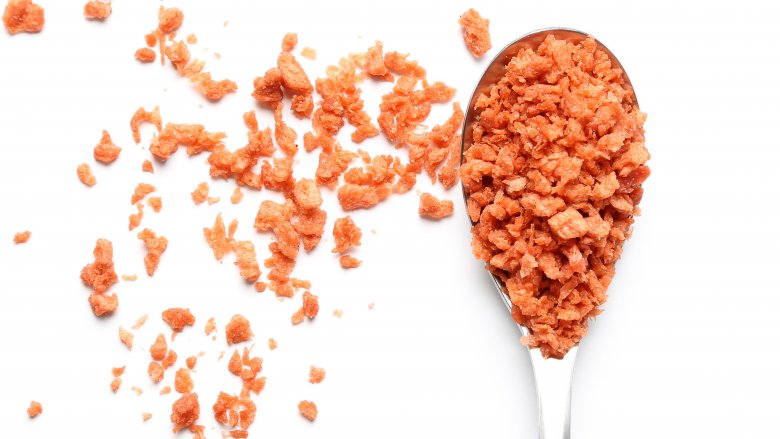Everyday Foods That Aren't What They Say They Are
What if your favorite food wasn't what you thought it was? That could, of course, mean that it's botanically different than how it's culinarily categorized, or that the way you eat it is different than how everyone else seems to, but it could also mean that what you think you're eating is something completely different than what is actually is. It could be a little bit mind-blowing to find out that your favorite winter squash is actually considered to be a berry, or that your favorite nuts, grains, or seeds aren't actually that at all.
In some cases, it's just marketing campaigns that lead you to believe your favorite food is what it says it is. In others, it's basically flat-out lies and deception (though perhaps not ill-intentioned), but those doing the deceiving sometimes get let off the hook on a technicality. Regardless, there are foods that you likely eat on occasion — or even perhaps with regular frequency — that aren't quite what they seem. Here's what you need to know.
Peanuts
While many people consider peanuts to be, well, nuts, they're actually truly legumes. That means that peanuts actually have more in common with beans, peas, chickpeas, and lentils than they do with other nuts.
White chocolate
White chocolate isn't chocolate at all. Its "chocolate" comes from cocoa butter, which is what's separated from the cocoa nibs that are processed into cocoa powder or chocolate. According to BuzzFeed, the Food and Drug Administration (FDA) has set limits on the proportions of ingredients in order for the product to be marketed as white chocolate, including "at least 20 [percent] cocoa butter." That's why when you toss a few white chocolate chips in your mouth because you're out of the real stuff, it's really not a satisfying substitute.
Maple syrup
To be fair, if it's sold as "pure maple syrup," chances are it is what it says it is, but imitation maple syrup (like imitation vanilla extract) is just that, an imitation, not the real deal. Likewise, if your bottle of syrup says "pancake syrup," it's probably not actually maple, just maple-flavored. The bottles all sit right next to each other on the grocery store shelves, so pay careful attention to what you're grabbing if you want the real deal.
American cheese
Despite its name, American cheese, that sliced, individually-wrapped, flimsy cheese of your youth, star of many a grilled cheese sandwich or cheeseburger, is a "cheese product." As J. Kenji López-Alt writes for Serious Eats, "...American cheese is a product made by blending real cheese with texture- and flavor-altering ingredients." So, yes, it's made with cheese, but the resulting product is classified as a "cheese product" because of the addition of those extra ingredients.
Crab stick
Imitation crab, or crab stick, often contains gluten, which clearly means it's not pure crab meat. Crab stick, also called surimi, is a mixture of starches, fillers, and ground fish, that's then formed into the shape of a crab leg (crab stick makes sense now, doesn't it?). Because it's not gluten-free, it's not safe if you have a gluten intolerance, allergy, or celiac disease, so you may need to make sure that the crab in whatever it is you're ordering is lump crab, rather than the imitation version.
Soy and nut milks
Given that alternative milks are especially popular right now, you're likely well-aware that soy milk, almond milk, and the like aren't really milk at all. Soy milk is made from soybeans, while almond milk (for instance) is made by soaking almonds, grinding them up, and straining the resulting liquid. Soy milk can be a good option for those who might be allergic to nuts (or "nuts") and dairy intolerant, while nut milks, oat milk, or rice milk can similarly work well for those allergic to or trying to avoid soy, and dairy intolerant. Beware, though, they tend to impart distinct flavors.
Honey
While you may think there's never any reason to doubt that the amber, viscous liquid that fills your honey bear is anything but true honey, it might actually be largely made of something else. According to research published in the Journal for Food Science (via EMSL Analytical), high-fructose corn syrup has been found to be added to some batches of honey to cut the amount of actual honey needed to fill the bottle.
Red snapper
Chances are, if you buy red snapper in the United States, what you're buying isn't actually red snapper. In an interview with Delish, Larry Olmstead, author of Real Food/Fake Food: Why You Don't Know What You're Eating & What You Can Do About It, said Red Snapper is almost always something else in the United States because the real fish is expensive, so less expensive fish ends up being subbed in its stead. One such frequent substitution? According to Olmstead, tilefish, which is considered to be high in mercury and so is especially unsafe for pregnant women, small children, individuals with compromised immune systems, and elderly adults.
Olive oil
The olive oil you have in your kitchen may or may not be what you think it is. According to The New York Times, some olive oil sold in the United States is actually a fatty derivative left over after pressing, made of olive skins and pits. And according to The New Yorker, olive oil has been replaced with or blended with other oils such as hazelnut oil and canola oil, and sold as olive oil. Not exactly what you thought you were getting when you picked up that bottle of olive oil, right?
Quinoa
Quinoa, like many other "ancient grains," is experiencing a bit of a moment as of late. Perhaps surprisingly, however, quinoa isn't actually a grain. According to HuffPost, quinoa, that most darling of grains, is actually a seed. Guess you'll have to start calling them "seed bowls" instead.
Wasabi
Whenever you head to a Japanese restaurant, you likely encounter wasabi paste. The wasabi on your dinner table, however, probably isn't the real thing. According to HuffPost, that pungent pale green paste is more likely to be a mixture of horseradish, mustard, and food coloring than actual wasabi. This paste, the horseradish substitute, is supposedly much harsher, well-known for that punishing burn, than the real deal, which is more herbaceous and doesn't leave such a distinctive aftertaste.
Lobster
Likely, the majority of lobster you purchase from the store or order in a nice restaurant, is in fact truly lobster. The lobster chunks in your fettuccine from a chain, however? Another story. It could still be the real deal, but, as Olmsted told Delish, it could also be "langostino," which isn't actually lobster, but rather some species of shrimp and crab.
Bacon bits
The bacon bits that come pre-made, ready to be sprinkled over salad or tossed on top of a bowl of pasta, surprisingly (or maybe not so?) aren't bacon. In fact, they're likely not meat at all. According to Business Insider, they're actually made of soy flour and canola oil, paired with artificial colors and flavors to mimic bacon. They're marketed as bacon-flavored and don't specifically call themselves bacon to avoid legal issues and other controversies. And we all know there's nothing worse than fake bacon, right?

